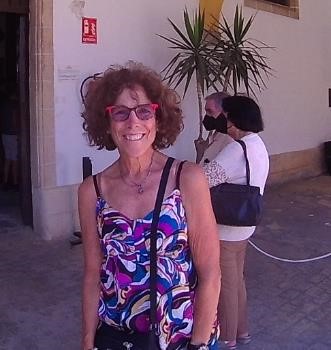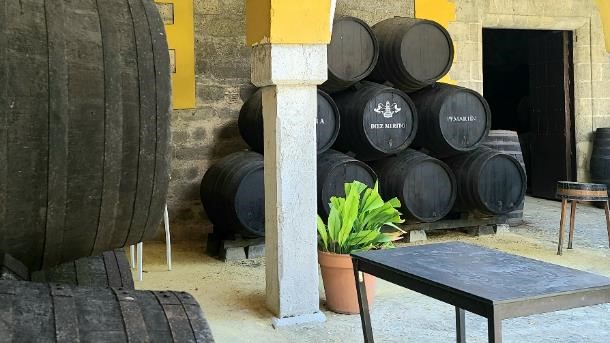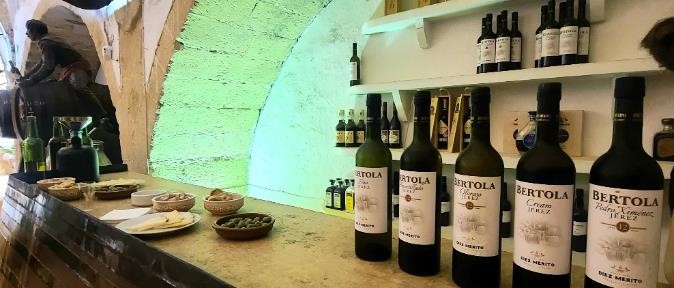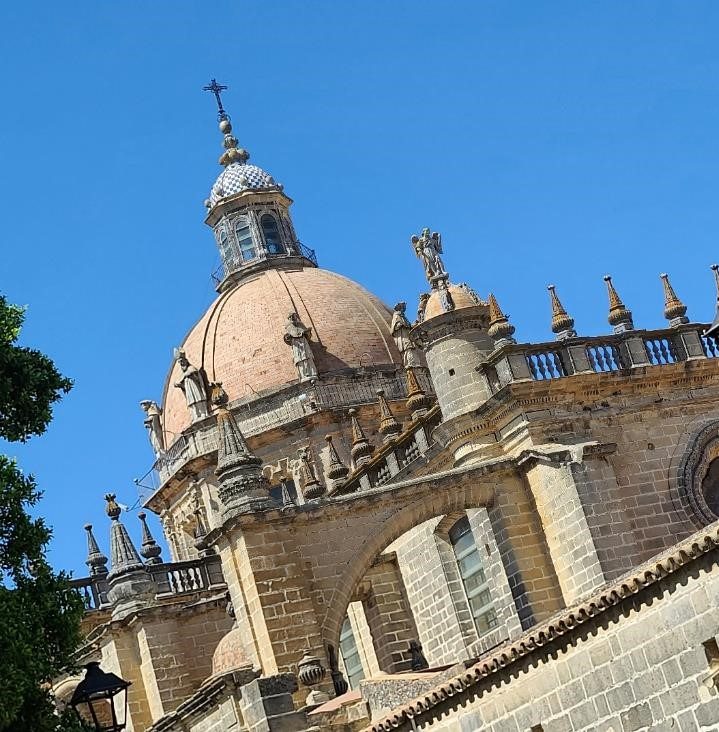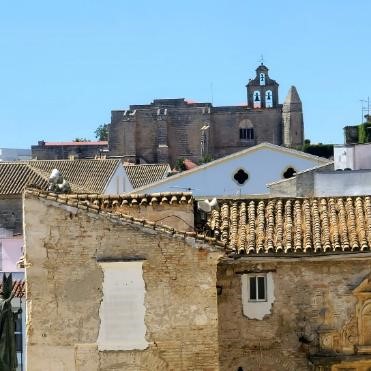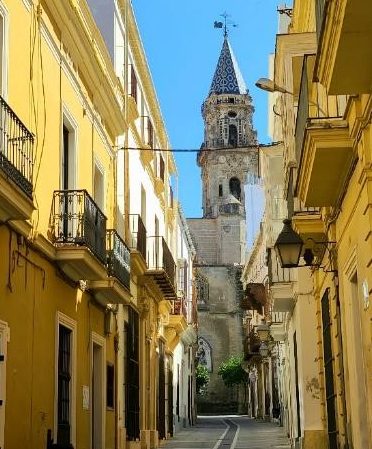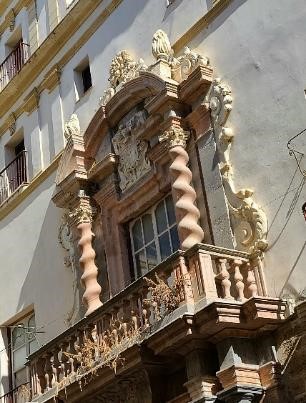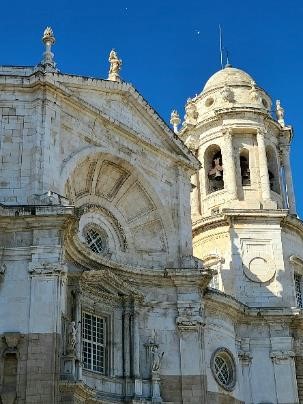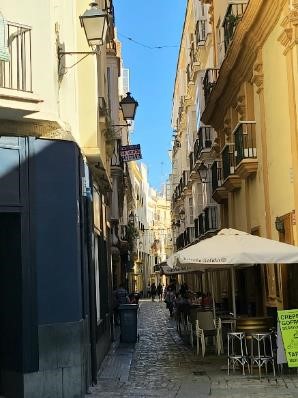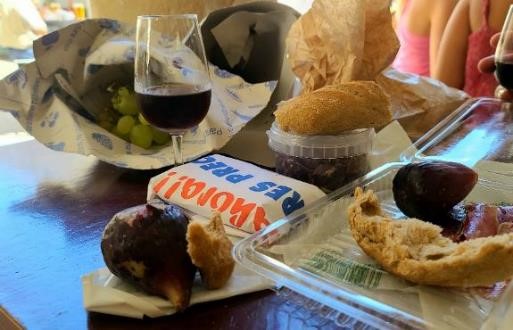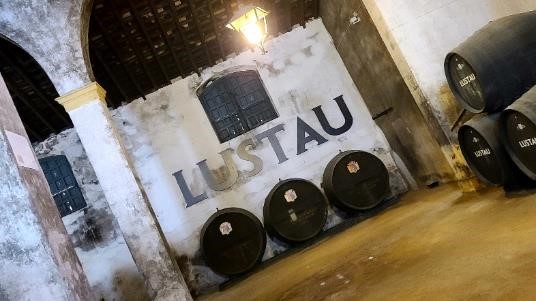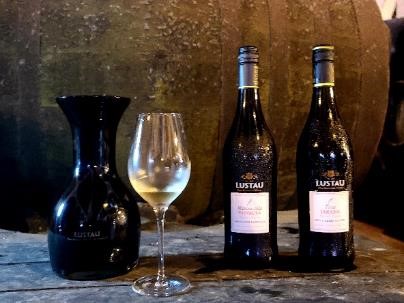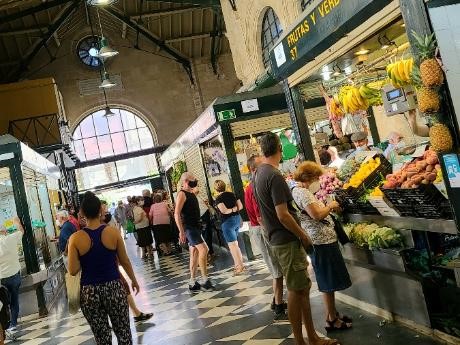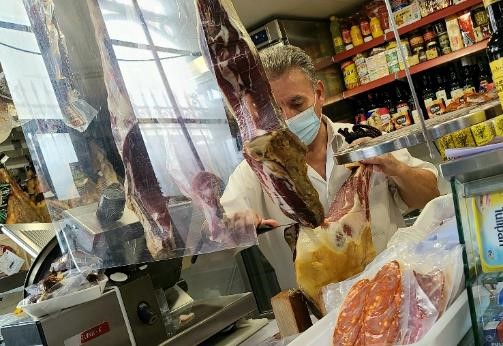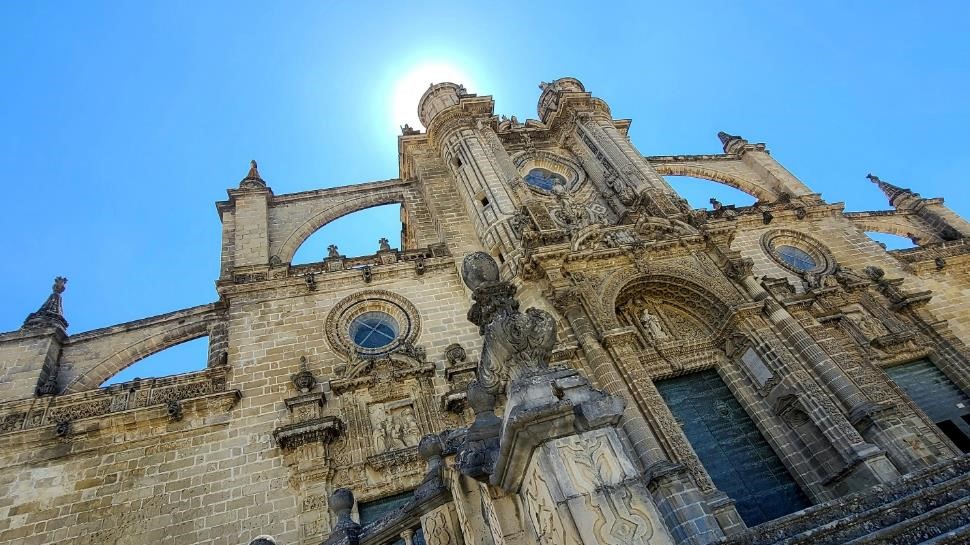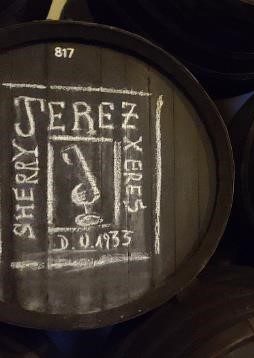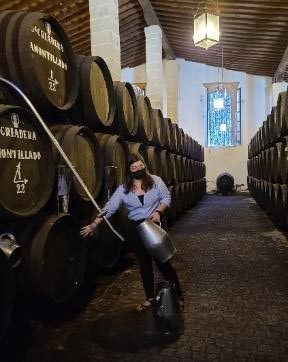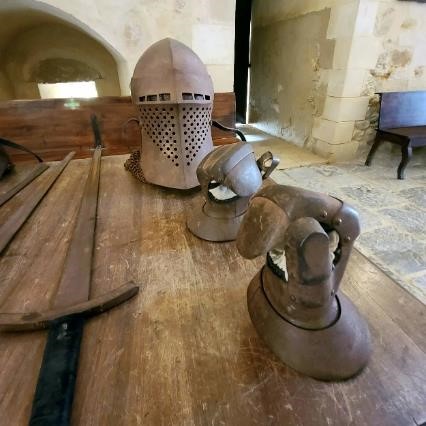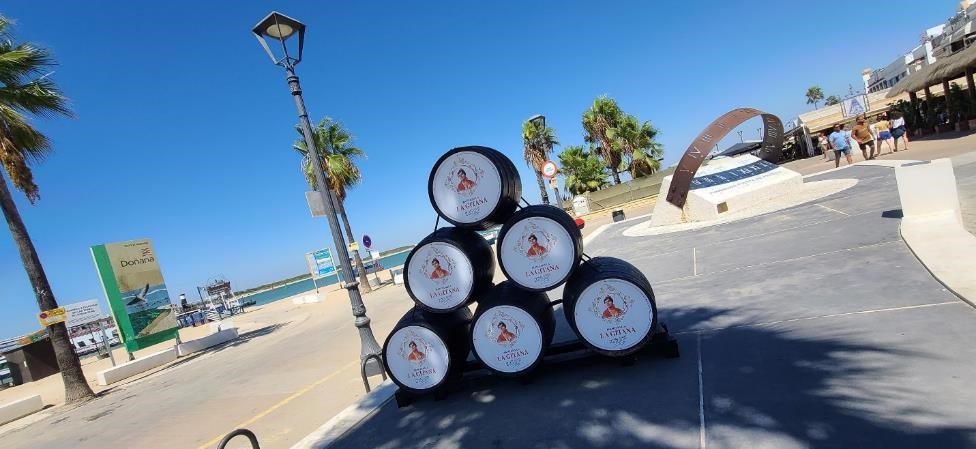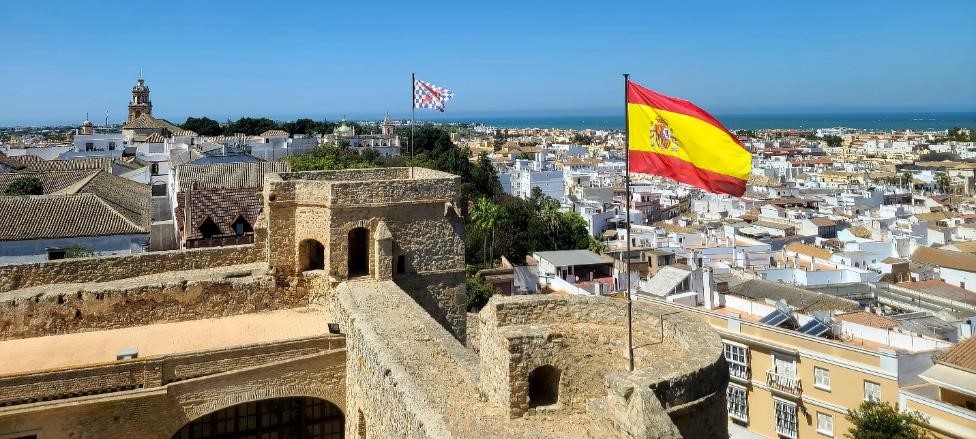Jerez, Spain 2021
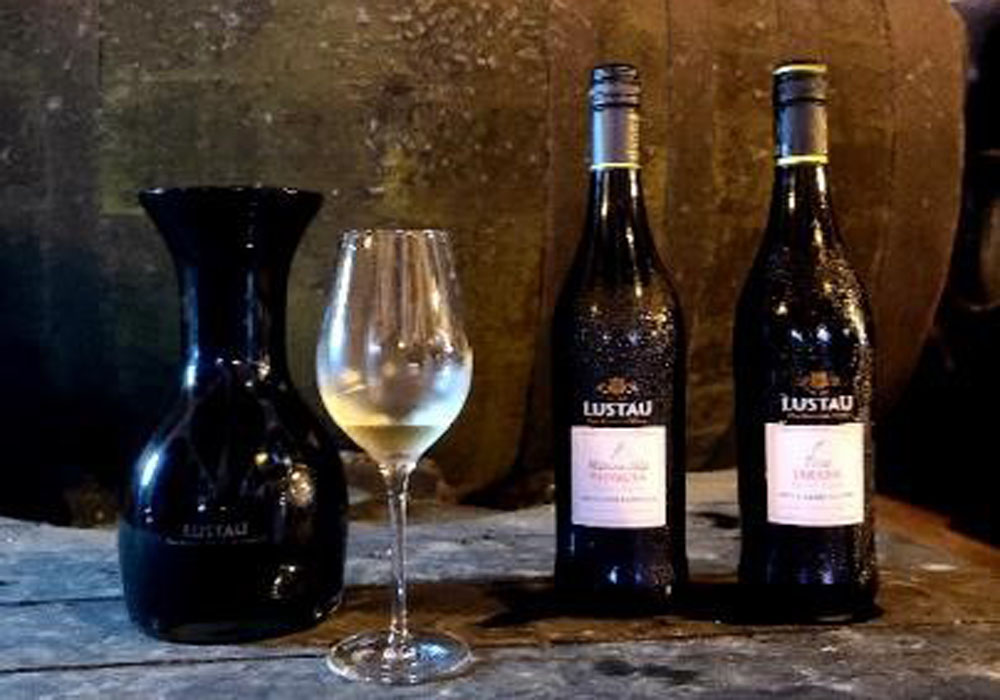
Savvy Sailing Girl had the chance to join a boat in Mallorca and sail the Balearics (the islands of Mallorca, Ibiza and Menorca) then the southern coasts of Spain and Portugal before continuing offshore and on to Madeira. Along the way, she got to visit the three main regions of the world renowned for producing fortified wines… Jerez in Andalucia Spain for Sherry, Oporto on the Atlantic coast of Portugal for Port, and the island of Madeira Grande known for their wines of the same name. I love all of these luxurious sweet and rich wines, and was able to taste and compare the various varieties of each! This is the first of three posts about my travels and tastings in these regions. Come along for a tour…
Jerez (Sherry)
I flew over to Jerez and rejoined Sam and his boat in Puerto Sherry. Unfortunately, my duffel bag took an extra day to arrive, but did eventually show up. I have always wanted to visit Jerez and Andalusia in southern Spain, so this was very exciting. The land seems absolutely parched, white, and dry as a bone as you drive by. One wonders how the grape vines could thrive here. But apparently they do, and the dry top layer of soil effectively keeps the moisture down below.

Jerez is the Spanish name for the region and its fortified wines. The name Sherry was brought to the area by the Moors of Northern Africa and refers to the same wine and region. Under Moorish rule the Roman town of “Ceret” was renamed to Sherish which later evolved to Jerez de la Frontera as it became the frontier town between Christian Spain and the Moorish kingdom in the 13th century. The Sherry region is comprised of a triangle formed by the cities of Jerez de la Frontera, Cadiz, and Sanlúcar de Barrameda. Just this year, the decision has been made by the local governance to expand the region somewhat outside of this triangle in order to allow new producers to get started and come to market, a move that delighted some and not so much others. Sherries, as with many other Spanish wines, in Savvy Sailing Girl’s opinion, are excellent, very well priced, and somewhat underestimated in comparison to other wine regions.
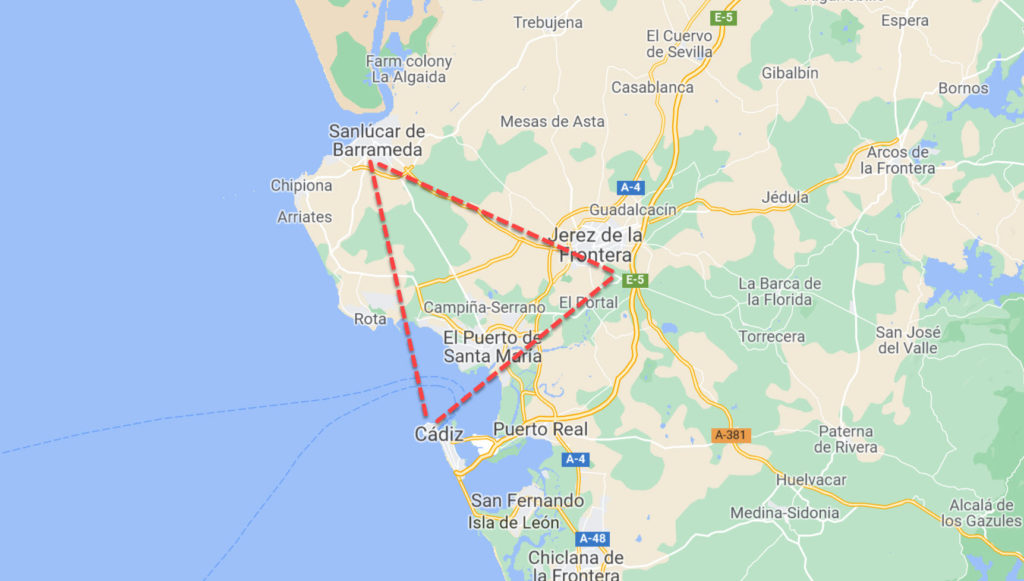
A little about Jerez/Sherry wines… this fortified wine is categorized first by level of sweetness, from Fino which is the lightest and driest, to Pedro Ximénez the heaviest and sweetest. The varieties are Fino, Amontillado, Oloroso, Cream, and then Pedro Ximénez. Within each category type, there’s also the age, the amount of time the wine remains in the casks, that distinguishes the taste and characteristics of the wine. This is different from Port wine, where the age is the primary distinguishing feature, going from young Ruby wines to older tawny wines, and aged blends and vintages. Sherry, as with Port and Madeira, are mostly ready to drink when you buy them and won’t improve in the bottle over time. The exception is for vintage wines, which are unfiltered. These will continue to age and improve over time.
In Jerez, as in Portugal, brandy was originally added to make their fortified wines stronger. They discovered that the increased alcohol content also had the effect of making the wine oxidize more and develop into another style of wine. The merchants began to call this wine Oloroso meaning “pungent”. The Sherry makers in Sanlúcar were a little more restrained in the use of their brandy, and found that the unique aspect of the the salty sea breezes that cooled most of that area’s bodegas produced an even lighter and more delicate wine with a freshness reminiscent of apples. They began to call these wines manzanilla or “little apple”.
The bodegas also found that if they limited the number of times that fresh wine was added to the solera (a collection of barrels used in the Sherry-making process, traditionally stacked with the bottom row containing the oldest vintage, for the purpose of blending across vintages), they could develop a wine style between Fino and Oloroso that would have some of the fragrant qualities, but with a little more oxidation and concentration of flavors. This style was reminiscent of the wines from nearby Montilla and they picked up the name Amontillado meaning “in the style of Montilla”. There was also more experimentation in making the wines sweeter. They found that the must from the Pedro Ximenez (PX) grape oxidized more slowly and added its own dimension of strength and sweetness to wine that it was blended with. Wines with significant proportions of PX added started to be called “Cream” or “Sweet” Sherry.
Sam and I took the train into Jerez de la Frontera and walked towards the center of town where we hoped to go visit the Tio Pepe Bodega, one of the larger Sherry producers in the area. Along the way, keeping a sharp eye for opportunities, we happened upon the Bodega Diez Méritz and our timing was excellent… there were two couples who had booked a tour and we were able to join in right then and there. The tour was thorough, informative, and just plain wonderful as was the comprehensive tasting that followed. Although I did not finish off all that was poured (Sam benefited from that, lol!), I still found myself “tacking” out of the winery (with 2 bottles purchased for enjoying at some point later, I might add! 😊).
Onward to the center of town and a lovely tapas (small/appetizer plates) lunch at a cafe recommended by our very nice winery tour guide. It was delicious. Jamon Ibérica is an ongoing theme to meals here in Spain (much to my delight!) along with the marvelous Spanish cheeses and other tasty bites. We were still hoping to visit the Tio Pepe Bodega after lunch but found that it was not open and no one answered the phone when we tried calling to make a booking. Too bad. Another day perhaps. Jerez will most definitely require a follow-on visit.
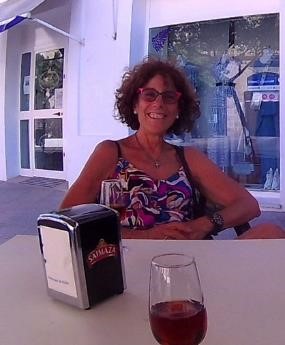
We meandered around a bit longer and then decided to have a glass of sherry at a little sidewalk café on the way back. The “jerez de la casa” (house sherry) was 1.10€, which led to seriously low expectations on our part, but it was actually marvelous! We then worked our way back to the train station feeling very well fortified indeed (as was the wine!)
Cadiz
Unfortunately, it was time to move on, though not very far… just across the way and under the beautiful bridge to Cadiz (second city in the Jerez triangle) to a more protected anchorage with less swell. The following day we dinghied ashore and had a nice walk into the old town of Cadiz where we toured the beautiful cathedral. We followed that up with a picnic lunch in the central market square – fresh figs, jamon ibérica, sheep’s cheese, fresh bread, local grapes and a glass of sherry. It could not have been better!
A day for provisioning and a day of rest, then back on the train to Jerez de la Frontera, this time solo…
I was on my own to get into whatever mischief presented itself! A day in Jerez, take two! An easy train ride from Cadiz, I was looking at the map and deciding on the walking route into town when I discovered Bodega Lustau was close by. This was the brand of Sherry we had with lunch at the market in Cadiz and it was good enough to want to see whether a tour was available for that day. Indeed, it was, but in English only at 10am. Sitting on the train and discovering this at 9:20am, SSG quickly calculated how much longer the ride was and how long the walk to the bodega would be. It was just doable with a 5-minute margin of safety. Once the train halted, it was a sprint out and she was on her way. 10am on a Thursday was obviously not in high demand for wine tasting and I was the only one there. So, I had a private tour and tasting, both of which were quite nice!
Then on to a local “queseria” (cheese shop), where a wonderful specimen was purchased for consumption later on. Next stop was to the central market (Savvy Sailing Girl loves the local fresh markets!) where she purchased some jamon Ibérica carved straight from the leg, which is often but not always available.
A visit to one of the local tabancos (this is a Spanish name for a local tapas bar where you can order Sherries poured straight from the cask). This was a wonderful stop for lunch before continuing on for a walk to the cathedral of Jerez. Not quite the splendor or size of the cathedral in Cadiz, however this one was lovely in its own way.
There was still time to walk around and explore some before the 4pm tour/tasting at Bodega Tradicíon. They use more traditional methods of production and are smaller than most of their competition. Their niche market is that they do primarily aged Sherries. There are two designations, VOS and VORS (in English, Very Old Sherry – no not me!!! And Very Old Rare Sherry – maybe me!, respectively). The VOS Sherries are at least 20 years old and VORS are 30 years or older. So, this tasting would be of all older varieties. Bodega Tradicion uses old-style processes for sampling wines in casks, transferring wines to soleras, and filling bottles. Our guide demonstrated how this was done, which was quite labor intensive. The tour and tasting were very nice, as was the art collection on site… quite impressive!
It was about a 30-minute walk back to the train station after the tour and a bit of a mix-up in terms of actually getting on the train (missed the first one and barely got on the second), but in the end arrived safely back to Cadiz and the boat.
Sanlúcar de Barrameda
Sam wanted to move on the next day, a bit earlier than I had thought, but we had a nice motor-boat (no wind) ride over to Sanlúcar to the west. Sanlúcar is the third city in the Jerez triangle. Only wines produced within this specific area and having been aged a minimum of 2 years, can be labeled Sherry.
We arrived, about 2 miles upriver on the Guadalquivir (direction Seville), past Sanlúcar de Barrameda. It was Friday evening and a party boat with quite a good live band cruised by at a slow pace providing us (as well as its paying passengers) good entertainment.
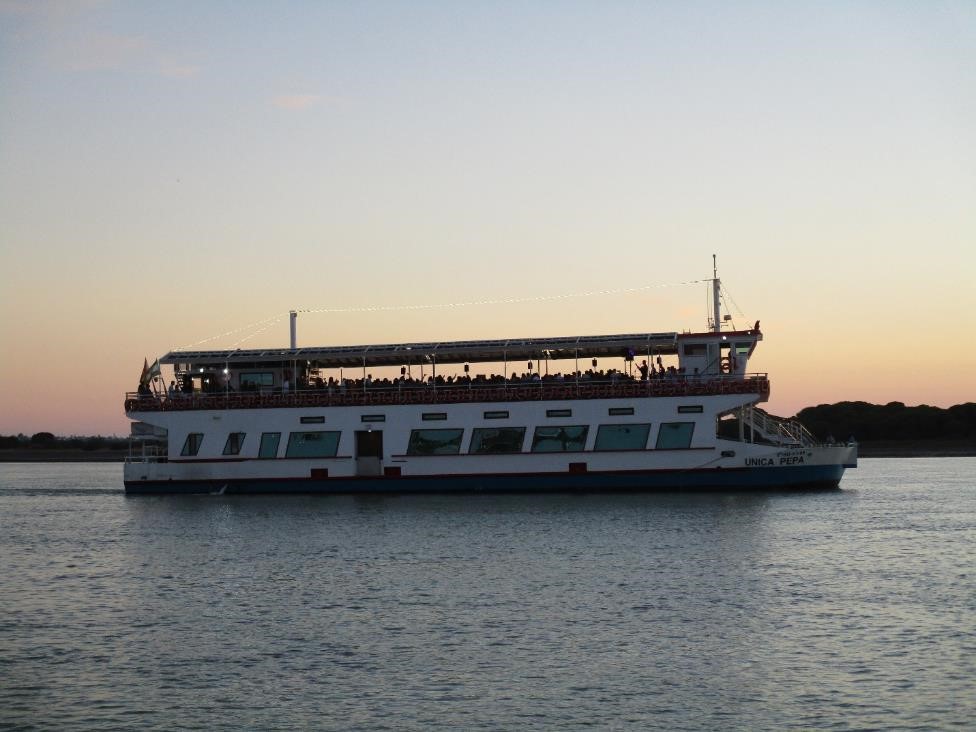
All was well until SSG went below to brush her teeth. In a (too vigorous) flossing exercise, she managed to dislodge an old crown. ACK!!!! Where to find a dental clinic near a small remote town on a weekend?!!! I was beside myself as I know these things need to be treated right away and Sam wanted to sail out on either Sunday or Monday. Yikes!…
After doing some research online Friday night, I discovered one dental clinic in Sanlúcar with opening hours on Saturday. First thing in the morning we dinghied to town and I went to see whether they were: 1. Actually where it said on the map, 2. Open when they said they’d be (not always the case here in Spain), 3. Could take me without an appointment, 4. Could actually re-cement the crown so that it would hold and I could continue on with my sailing/traveling plans without interruption. Thankfully, the Universe was very kind and took very good care of me. All went smoothly and within an hour I was reglued (both physically and emotionally). I sat quietly on a nearby bench and offered deep gratitude for this good fortune. And then, I thought, “why not have a look around?”.
The town is absolutely lovely, small but quaint and with its fair share of sherry bodegas and noteworthy sights. SSG toured the Castell de Santiago (Castle of Saint James) from the 1400’s, visited the central market which was in full swing on a Saturday, and then went to Bodega Hidalgo Gitano where she discovered that you can buy sherry directly out of the cask for less than half the price of bottles. She took advantage of this opportunity so that the boat and crew would have sufficient stores until we reached Madeira where we would enjoy another touring/tasting opportunity!
It was a wonderful time in Andalucia Spain, sipping Jerez/Sherry and seeing the sights. Now it’s time to leave Spain and continue west along the southern coast into Portugal. Stay tuned for adventures afloat as well as the continued tour of the European fortified wine regions!

